We have just spent 3 days in Buenos Aires. Located on the Rio de la Plata, it is the capital of Argentina and its largest city. The city proper has a population of only 3.1 million, but the greater urban metropolitan area has a population of 16.7 million, making it the 14th largest metropolitan area in the world.
The city has been nicknamed the Paris of South America and it is easy to see why. The architecture, sprawling parks, cafes and restaurants make for a lively bustling vibe that is similar to that of Paris (or New York for that matter.)
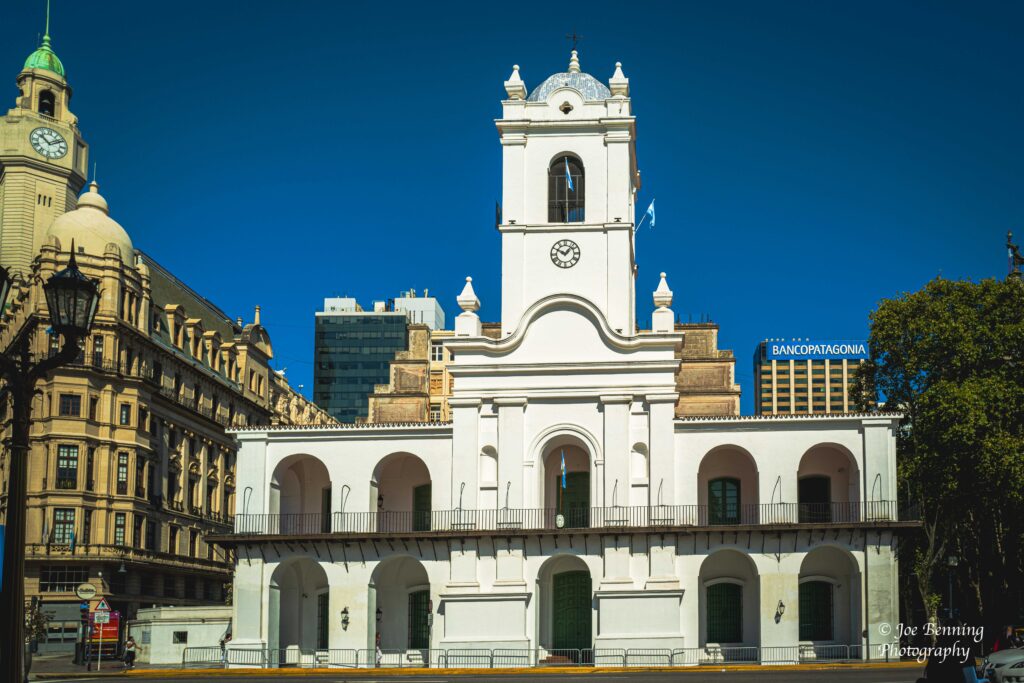
And then there is the Tango. Argentinians are convinced that they invented it. Uruguayans are equally convinced that the dance is “theirs”. Since the dance developed on the banks of the River Plate and that is the border between the two countries, you can see why both claim the dance as their own.
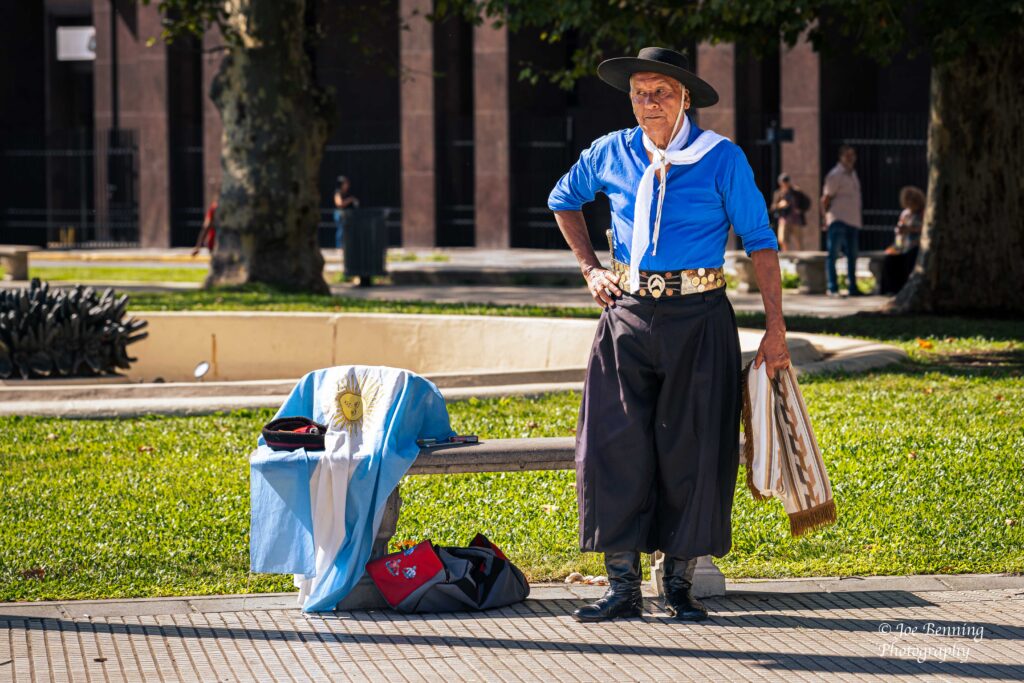
After we docked in Buenos Aires we headed off to the Plaza de Mayo, which is probably the most important square in the city. There we spotted a man dressed in the traditional garb of a gaucho (Argentinian cowboy). Later we saw the gleaming white government building.
The Plaza de Mayo is also home to the Casa Rosa (Pink House) that serves as the seat of the Argentine government, dominates the square and houses the president’s office. It is here where Eva Perón, nee Eva Duarte, wife of Juan Perón, AKA “Evita” made many of her famous appearances.
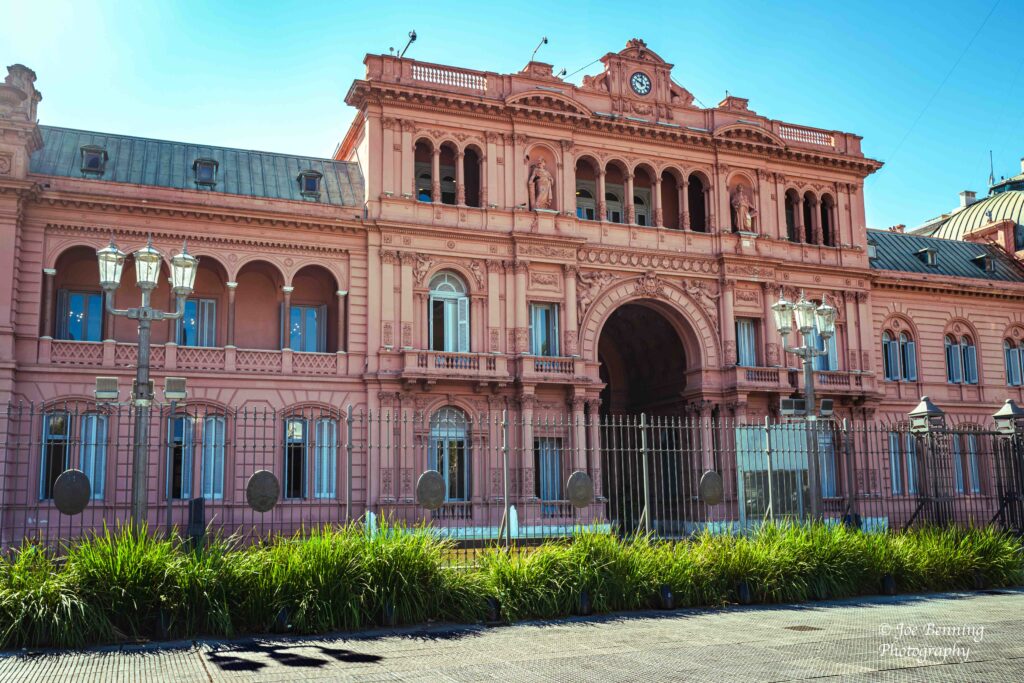
There are weekly protests in the Plaza de Mayo by the women in white, who still search for the many children who were abducted and adopted illegally, after their parents were “disappeared” for disagreeing with the military dictatorship (1976-83). It is a reminder that the history of this country has had its dark times.
Near the Plaza de Mayo is the Metropolitan Cathedral of the Most Holy Trinity where then bishop Jorge Mario Begoglio presided, before becoming Pope Francis.

After visiting the Plaza de Mayo, we continued on to visit the La Boca neighborhood. It is known for its colorful houses that people in the area constructed out of whatever discarded material they could find from the nearby shipping port. Many of the buildings are made from the corrugated container material, brightly painted with the colors that were used at the port (reflecting the flags of ships from other countries).
Among other things, we saw a small park in La Boca and a BBQ stand where a local man was grilling various meats.
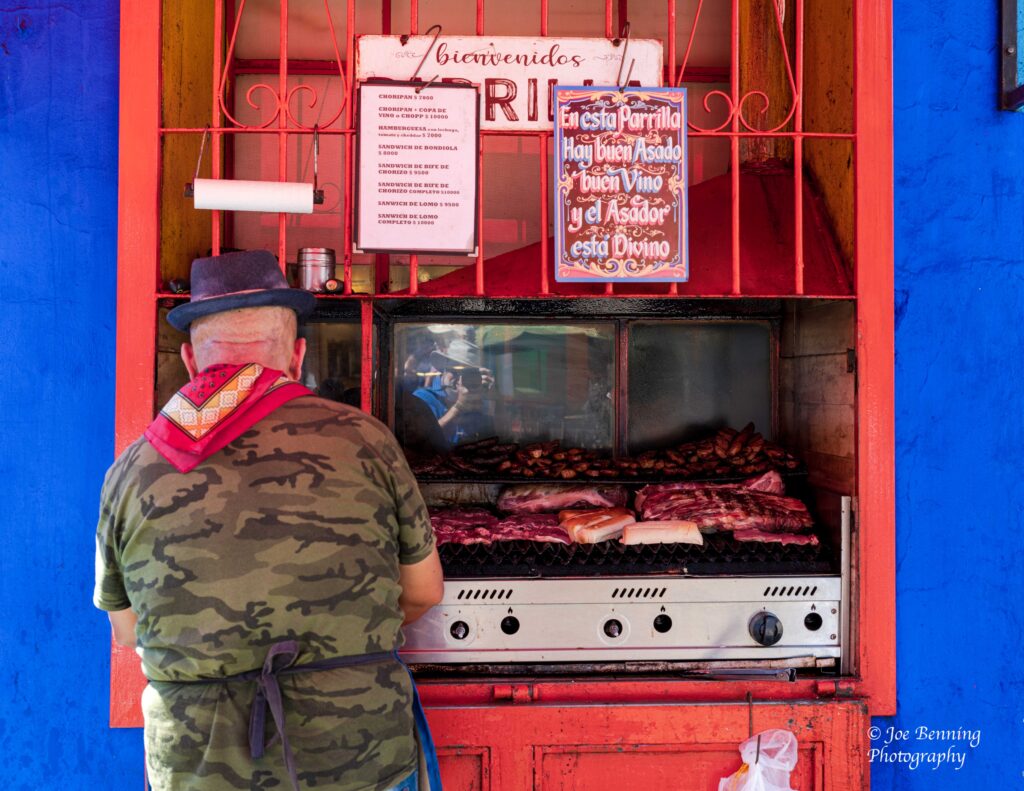
La Boca is also known for dancers who don traditional Tango garb and convince tourists to fork over $10 to have their photos taken with them. And speaking of tourists, there was no lack of them in La Boca.
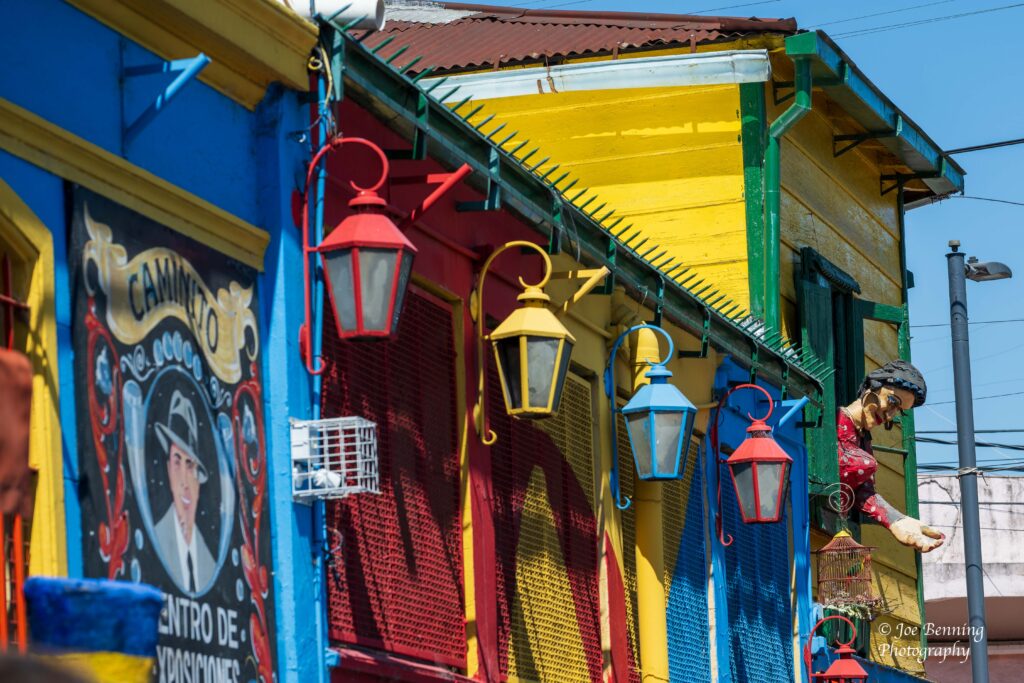
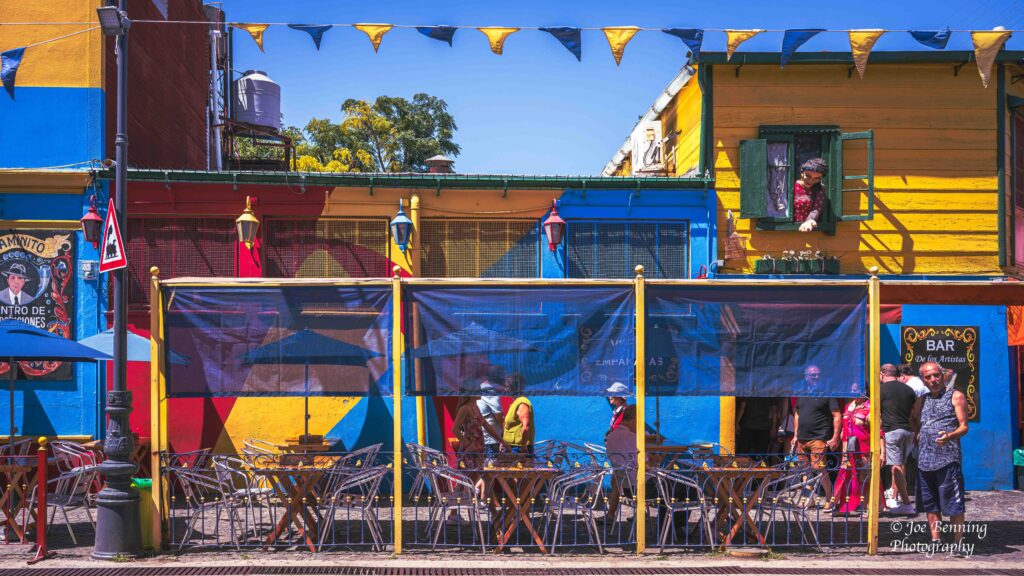
While the Catholic religion is prominent in Argentina, the nation’s second religion also is huge – fútbol. In the Boca region of BA we visited an enormous complex that houses the arena, training areas, housing and other facilities for the Boca Jr club. The colors of the uniforms and buildings are bright blue and yellow – another reflection of the colors in the flag of Norway that flew on a cargo ship in the port. (It’s a long story that involves 2 rival local teams that shared other colors – there was a match to determine which town would stay in Boca, and the winner agreed to change colors to the flag on the first ship in port the next day.)
We also spent some time in La Recoleta, an upscale neighborhood with pricey Parisian style townhouses. We ducked into a local shop for some croissants and coffee. The Recoleta Cemetery, final resting place of many famous Argentinians (including Evita) is here in the neighborhood as well.

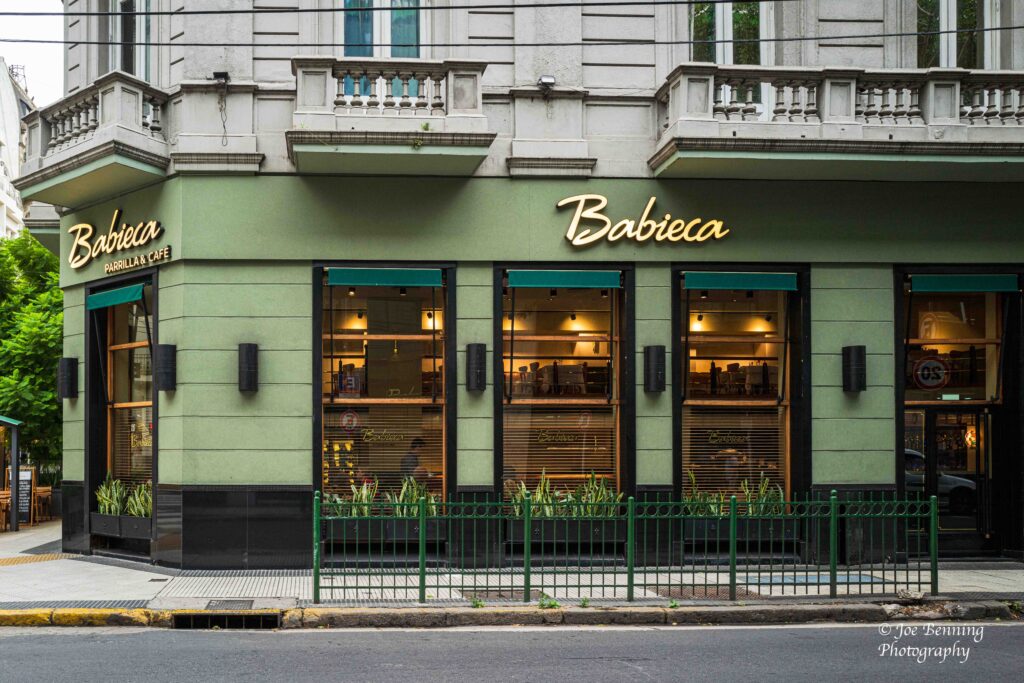
Another visit was to the Museo de Nacional de Belles Artes. It was not too large—but it had an impressive European collection. We saw paintings by Manet, Monet, Degas, Gaugin, Pissarro and Picasso, not to mention many sculptures by Rodin.
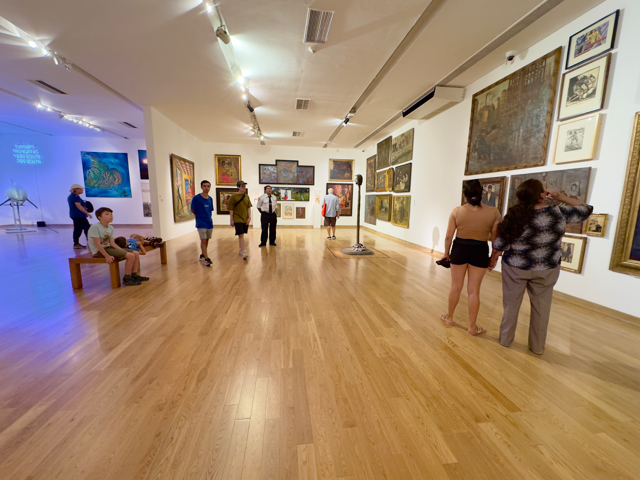
Finally, we visited a famous bookstore “La Atenea” and later stopped for coffee and pan dulce (“sweet bread”). The pan dulce was just too much, and Mary Anne rather adroitly gave it to our Uber driver, who is a fan of it.
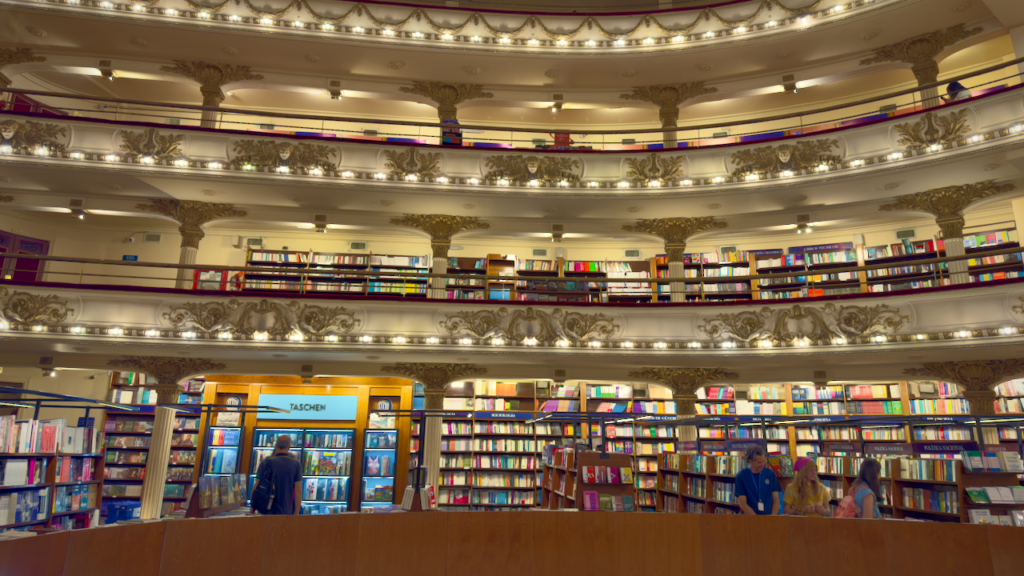
This is just a small sample of what is available in Buenos Aires, a remarkable global city.
Joe and Mary Anne

Buenos Aries looks like a remarkable city. Thanks for the interesting photos and write up
lots to see and do. Looks like you guys are having a wonderful time. Enjoy
barb
What beautiful photos and summary of the highlights of BA. ! May be my all time favorite city…..would go back in a heartbeat
Happy Birthday, Joe. So colorful and cosmopolitan. Enjoy
Thanks–Joe